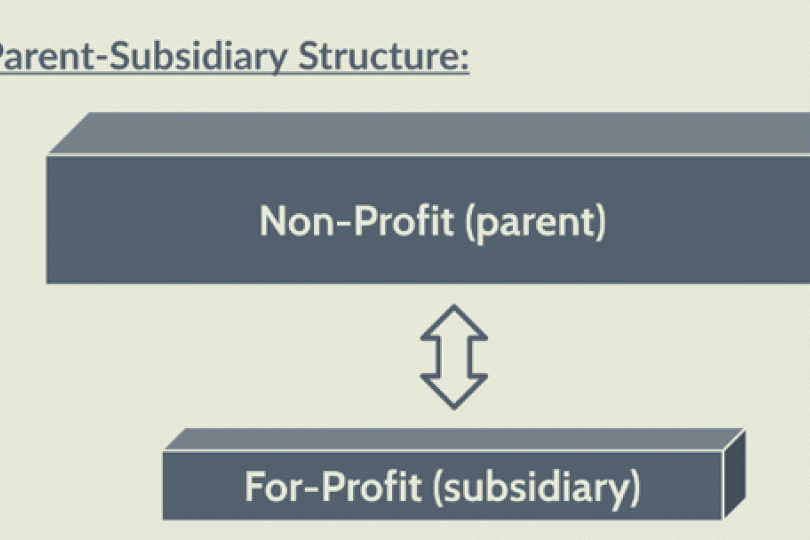Should your social enterprise be a non-profit, for-profit, or hybrid?
Editor's note: The following post originially appeard on LinkedIn.
Traditionally, the divide between a for-profit or nonprofit organization was clear: for-profit businesses would engage in revenue generation and nonprofits would engage in charitable work to solve social issues and would largely stay away from revenue generation. The rise of social enterprises in recent years, however, has made that distinction less and less clear. Social entrepreneurs are finding innovative ways to challenge the traditional thinking about nonprofit organizations (by focusing on economically sustainable models) and for-profit businesses (by focusing on solving social issues). As you set out on your mission to change the world, you will have to decide if you want to form your venture as a for-profit or nonprofit–or perhaps some hybrid of the two. The answer will largely depend on your best guess as to source of funding and your activities.
Here are the advantages, disadvantages, and the process for forming each.
Option 1: Only For-Profit Company
A for-profit can be structured as a regular C-Corporation, an S-Corporation, aLimited Liability Company, a Benefit Corporation, or Social Purpose Corporation(CA only).
Advantages:
Ability to Take in Investments. Unlike a nonprofit, a for-profit company can have private owners. The ownership of the company, or its equity, can be divided and allocated among different individuals. For this reason, one advantage of a for-profit company is that it could allow you to bring in investors ranging from friends and family to angel investors and venture capitalists. The best legal structure for receiving investments is a C-Corporation. S-Corps have certain restrictions on who can own the company’s stock. It is unclear how being structured as a Benefit Corporation may impact your ability to raise funding from VCs and angels. While some investors are quite unfamiliar with this new entity type and have questions about the exposure to risk due to the company’s social obligation, there are impact investors who are drawn to triple-bottom-line businesses because of their emphasis on social impact.
No Limits on Revenue Generation. Unlike a nonprofit, there is no limit on a for-profit company’s ability to generate revenue through providing goods and services. This may be an important factor for enterprises that have a substantial expected source of revenue, as too much revenue can actually jeopordize your nonprofit status (see below).
Disadvantages:
No Ability to Receive Grants or Offer Tax Deduction to Donors. One big drawback with a for-profit company is that, unlike a nonprofit, it is not generally eligible to receive foundation and government grants (one exception is Program Related Investments). Similarly, a for-profit company cannot offer tax deduction to donors. While some individuals may donate regardless of the tax deduction, this effectively eliminates large donors since they almost always require a tax deduction as a condition for donation.
Taxes. Another drawback with for-profit businesses is that they pay taxes (see Fees/Costs below). This factor, while somewhat relevant, should not be an overriding factor in deciding your entity type, as the costs could be small relative to the loss of certain opportunities by selecting a nonprofit organization.
The Nitty Gritty:
Fees/Costs. The government filing fee to form a for-profit business can be a bit over $100. This is a one-time fee. In addition, a company will have to pay a minimum franchise tax in every state in which it does business ($800 in California and $350 in Delaware). This is an annual tax.
Formation. To form a for-profit business, you will have to do the following:
- Decide in which state you want to form your business. Here is some information on the factors that go into that decision.
- File your organizing document with the Secretary of State to formally register as a corporation, LLC, or other entity.
- Adopt all other necessary papers. Depending on the entity type, they may include bylaws, an operating agreement, consents of directors, stock issuances, confidentiality and invention assignment agreements, indemnification agreements, and others.
- Make any other applicable filings (such as a Statement of Information in California).
- Qualify to do business in any state in which you do business.
Option 2: Only Nonprofit Corporation
A nonprofit is generally still a corporation (a nonprofit corporation), although it can take the form of other types of entities as well. However, it is very different from a regular for-profit corporation. There are a great variety of nonprofits, and each can do different things, but the most common type of nonprofit is a 501(c)(3).
Advantages:
Ability to Receive Grants and Offer Tax Deduction to Donors. A 501(c)(3) nonprofit allows you to get government and foundation grants and to offer tax deduction to any donors. Other types of nonprofits (such as a social welfare organization under 501(c)(4)) are technically tax exempt but they do not have this capacity. This may be an especially important factor for businesses that operate in a field where there are a lot of opportunities for receiving grants (such as education) and questions as to the enterprise’s ability to generate enough revenue to sustain itself without grants.
Disadvantages:
Limit on Revenue Generation. Perhaps the biggest drawback with a nonprofit for social enterprises is its limitations on revenue generation. Here is our earlier article discussing how a nonprofit can sell goods and services. To summarize, a nonprofit can sell products or services. However, if those sales are unrelated to itsexempt purposes (as described to the IRS in its tax-exempt application), those parts of the organization’s activities will be subject to tax.
And if the unrelated revenue is too substantial a portion of the organization’s income, then the nonprofit risks losing its tax-exempt status. Unfortunately there is no clear definition of what is “substantial” for purposes of this analysis. The permitted amount is dependent on the facts of each case, and it can range from 5% to 75% of income, although it is good practice to keep it at no more than 20%. See the IRS regulations for more information.
If possible, the best way to avoid the problem with generating substantial revenue is to craft your IRS tax-exempt application in a way that anticipates the activity as part of your exempt purpose. But letting the IRS know that you intend to generate substantial revenue may delay the processing of your application if the IRS wants to ask questions about it.
No Ability to Take Investments. Because a nonprofit does not have owners, there is no equity to give out. This means you would not be able to bring on equity investors such as angels and VCs (although loans are still available).
The Nitty Gritty:
Fees/Costs. A nonprofit does not pay tax, but the government filing fee for the IRS application is close to $1,000 (this is a one-time fee).
Formation. To accurately think of nonprofits, you have to envision a two-step process. First, the entity is formed with the state as a nonprofit organization. Second, the entity applies for tax exemption from the IRS. Until the organization actually receives a determination letter from the IRS, it is not a tax-exempt organization and cannot raise offer tax deductions to donors. To form a non-profit, you would:
- File your organizing document with the Secretary of State to formally register as a nonprofit corporation.
- Submit your IRS application for tax exemption (this is called the Form 1023), which can take a few months on the low end and a year or more on the long end (especially if the IRS has questions about revenue generating activities).
- Adopt your bylaws.
- Register with the California Attorney General.
- Follow ongoing reporting requirements.
Option 3: Both a For-Profit and a Nonprofit (Hybrid Structure)
Advantages:
Ability to Take Investments, Receive Grants, and Offer Tax Deduction to Donors. This will allow you to carry out the pro bono services of the organization under the nonprofit and the paid services under the for-profit business. The non-profit will have access to grants and donation, and the for-profit will be able to take on investors, so there’s access to more sources of funding.
No Limit on Revenue Generating Activities. As long as the revenue generating activities are carried out under the for-profit, there is also no limit on generating revenue.
Disadvantage:
Complicated Structure. The tricky thing about these hybrid structures is how they are structured. There are 2 options:
- Parent-Subsidiary. Have the nonprofit as the parent organization, and the for-profit as a subsidiary owned by the nonprofit. To do this, the non-profit would have to qualify as a “public charity”, which means that it has to get most of its funding from public sources to satisfy the public-support requirement.
- Brother-Sister. Operate the nonprofit as for-profit as entirely separate entities.
Under either structure, money can flow from the for-profit to the nonprofit, but not from the nonprofit to the for-profit. The for-profit entity can donate money to the nonprofit (and lower its tax liability by up to 10% of its net income). However, because all assets of a nonprofit must be permanently dedicated to charitable causes, a nonprofit could not give away its funds to the for-profit. However, the nonprofit can purchase goods and services from the for-profit at reasonable rates. This requires the enterprise to maintain very good records of the transactions between the two entities (see below).
The big drawback with this hybrid approach is that you would have to essentially run 2 separate organizations, each with its own boards, which might be a hassle administratively since it is best to avoid too much overlap of boards.
Costs/Fees. You would pay tax on the for-profit business’s activities, and the filing fees would include both of the fees described above in options 1 and 2.
Nitty Gritty
Typically, if an entity is unsure if it should go with a nonprofit or for-profit or the hybrid approach, one option is to start with the nonprofit entity (as outlined in option 2 above), and wait to form the for-profit entity (as described in option 1 above) when it becomes possible/necessary to generate substantial unrelated income or take on investors.

